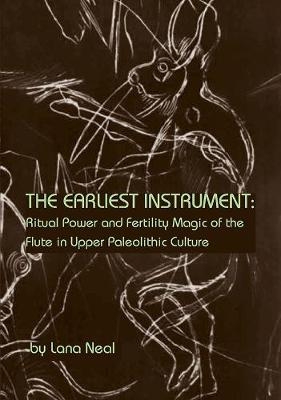
The Earliest Instrument
Pendragon Press (Verlag)
978-1-57647-221-7 (ISBN)
- Keine Verlagsinformationen verfügbar
- Artikel merken
This book investigates the earliest known musical instruments within the larger cultural context. Upper Paleolithic flutes are the oldest musical instruments that have survived in the archeological record. The significance of this study lies in the synthesis of various methodologies and sources of evidence to gain an understanding of the place of the instruments in Upper Paleolithic culture. It is a comprehensive investigation of the artifacts and their ritual and social functions.
Upper Paleolithic flutes have been discovered at archeological sites dating from approximately 43,000 to 12,000 years ago. Although humans were most likely creating music prior to this time, the people who entered Europe approximately 43,000 years ago began to create musical instruments that have survived to the present day. Analysis of the artifacts is followed by examination of the archeological contexts, parietal and mobiliary art as it relates to sonic expression, ethnographic examples, and the instrument as it appears in various mythological systems around the world.
These instruments were powerful symbols essential to the expression of the most fundamental aspects of life and death. They were symbols of life and thus intrinsically linked to human fertility as well as the fecundity of plants and animals. The flutes were associated with the cycle of life and death and marked important points in this cycle. This investigation provides a new level of insight into the function of music in human culture.
Lana Neal has a Ph.D. in Musicology from the University of Texas at Austin, USA. She has an M.M. in Musicology from the University of Texas at Austin, USA and a B.A. in Mathematics and Music from Southwestern University, USA. Her research encompasses topics in music archaeology, Medieval music, and structural principles in the music of Bela Bartok. She has taught music at the University of Texas at Austin, USA and Franklin College in Switzerland. She has also taught mathematics at the University of Texas at Austin, Texas State University, Austin Community College, USA, and Franklin College, Switzerland. In preparation for this book, Dr. Neal conducted research and fieldwork at the Musee d'Archeologie Nationale in Saint-Germain-en-Laye, the archaeological site of Isturitz in southern France, and the British Library.
| Erscheint lt. Verlag | 1.7.2015 |
|---|---|
| Sprache | englisch |
| Maße | 60 x 90 mm |
| Themenwelt | Kunst / Musik / Theater ► Musik ► Instrumentenkunde |
| Geschichte ► Allgemeine Geschichte ► Vor- und Frühgeschichte | |
| ISBN-10 | 1-57647-221-3 / 1576472213 |
| ISBN-13 | 978-1-57647-221-7 / 9781576472217 |
| Zustand | Neuware |
| Haben Sie eine Frage zum Produkt? |
aus dem Bereich


